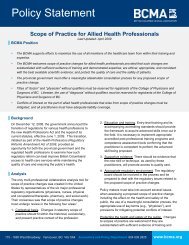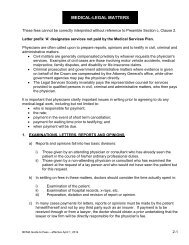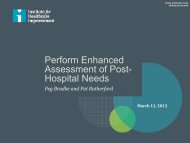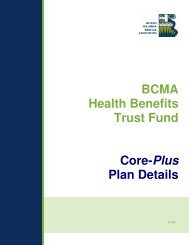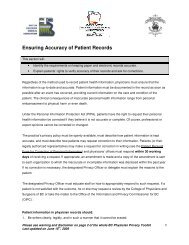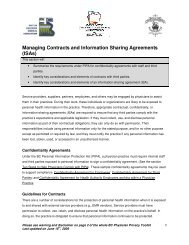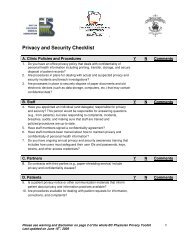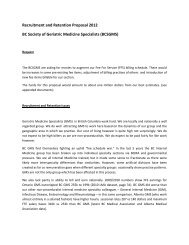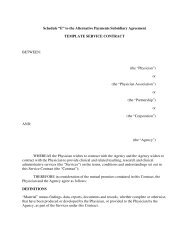Doctors Today and Tomorrow - British Columbia Medical Association
Doctors Today and Tomorrow - British Columbia Medical Association
Doctors Today and Tomorrow - British Columbia Medical Association
You also want an ePaper? Increase the reach of your titles
YUMPU automatically turns print PDFs into web optimized ePapers that Google loves.
Conclusion<br />
The challenges facing physician workforce planning are not new. However, the complexities of those challenges <strong>and</strong><br />
the linkages between them throughout the medical career life cycle have not been fully acknowledged. Minimizing<br />
the cycles of physician surpluses <strong>and</strong> shortages will require careful consultation <strong>and</strong> coordination, with particular<br />
attention being paid to the expected impacts of policy throughout the medical career life cycle, the future health<br />
needs of the population, the changing physician demographics, <strong>and</strong> the individual choices that physicians make about<br />
what, how, <strong>and</strong> where they practice.<br />
Addressing these challenges ultimately requires leadership <strong>and</strong> a commitment to change from all parties. The<br />
creation of a provincial multi-stakeholder physician resource planning committee, along with a province-wide<br />
planning framework <strong>and</strong> workforce database, will form a structured collaborative process to direct <strong>and</strong> clarify the<br />
physician workforce planning agenda <strong>and</strong> increase the capacity for physician workforce management. Because no<br />
one community, level of government, university, health care delivery organization, or professional organization can<br />
independently address the challenges in the physician resource sector, meaningful change requires partnerships to<br />
be formed between stakeholders, with the aim of finding cooperative solutions that reconcile, to the degree possible,<br />
competing professional <strong>and</strong> political ideologies.<br />
Physician resource planning is not solely a technical exercise; it is also a value-driven one. The future need of physicians<br />
is influenced by the political <strong>and</strong> social choices that underlie the health care system, <strong>and</strong> how the future role of the<br />
physician is defined. There is no one ideal physician-to-population ratio or optimum number of physicians – other<br />
than the one that fully-informed <strong>British</strong> <strong>Columbia</strong>ns support. By adopting a more collaborative <strong>and</strong> comprehensive<br />
planning approach, both provincially <strong>and</strong> nationally, stakeholders can minimize unintended policy impacts, the<br />
mismatch between supply <strong>and</strong> needs, <strong>and</strong> costly duplication. This common goal should propel all stakeholders to work<br />
together thoughtfully <strong>and</strong> collaboratively to improve physician workforce planning, because what we prepare for now<br />
will be what we get later.<br />
<strong>Doctors</strong> <strong>Today</strong> <strong>and</strong> <strong>Tomorrow</strong> – Conclusion 31



